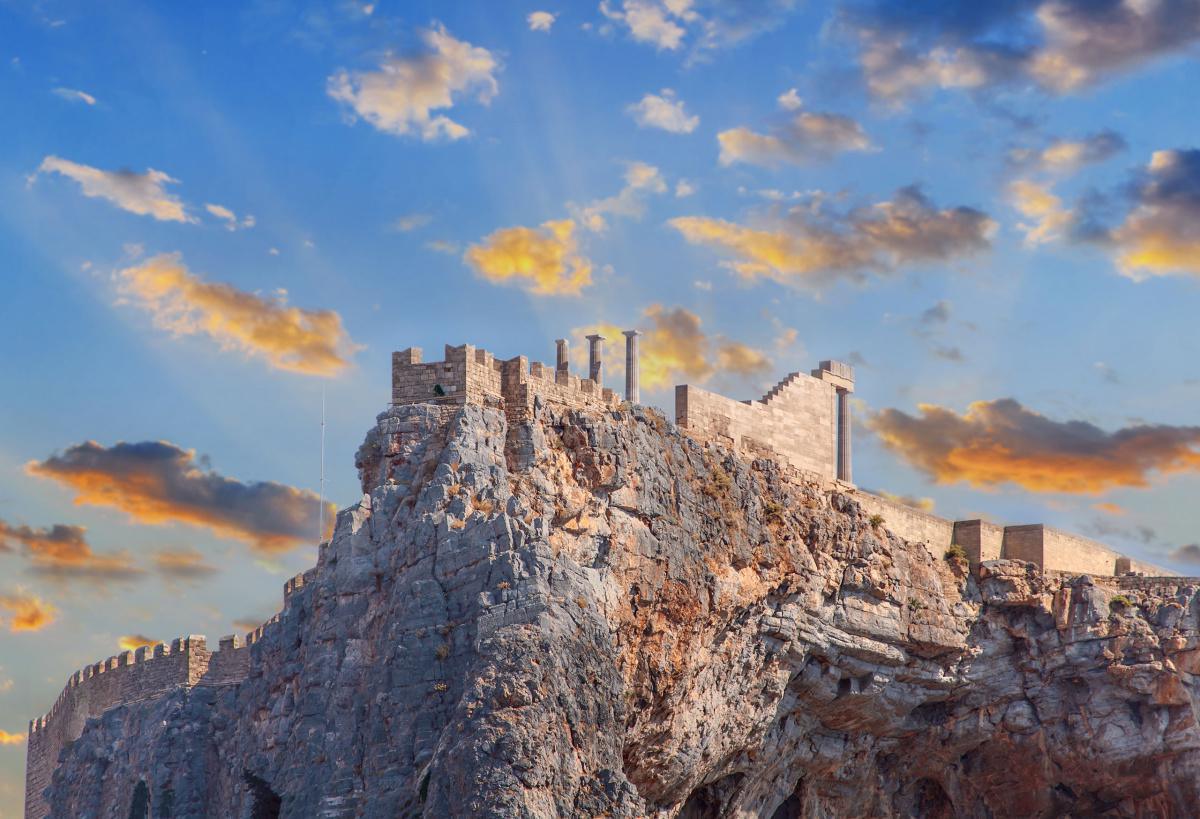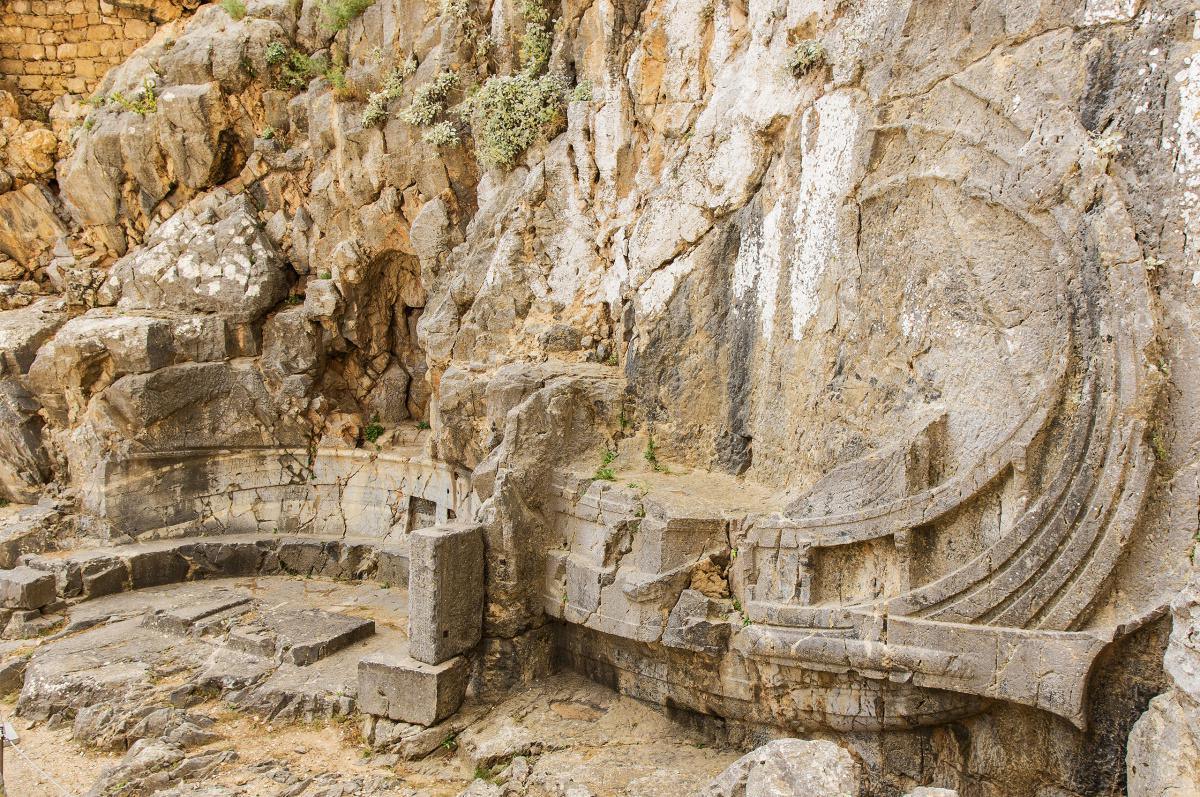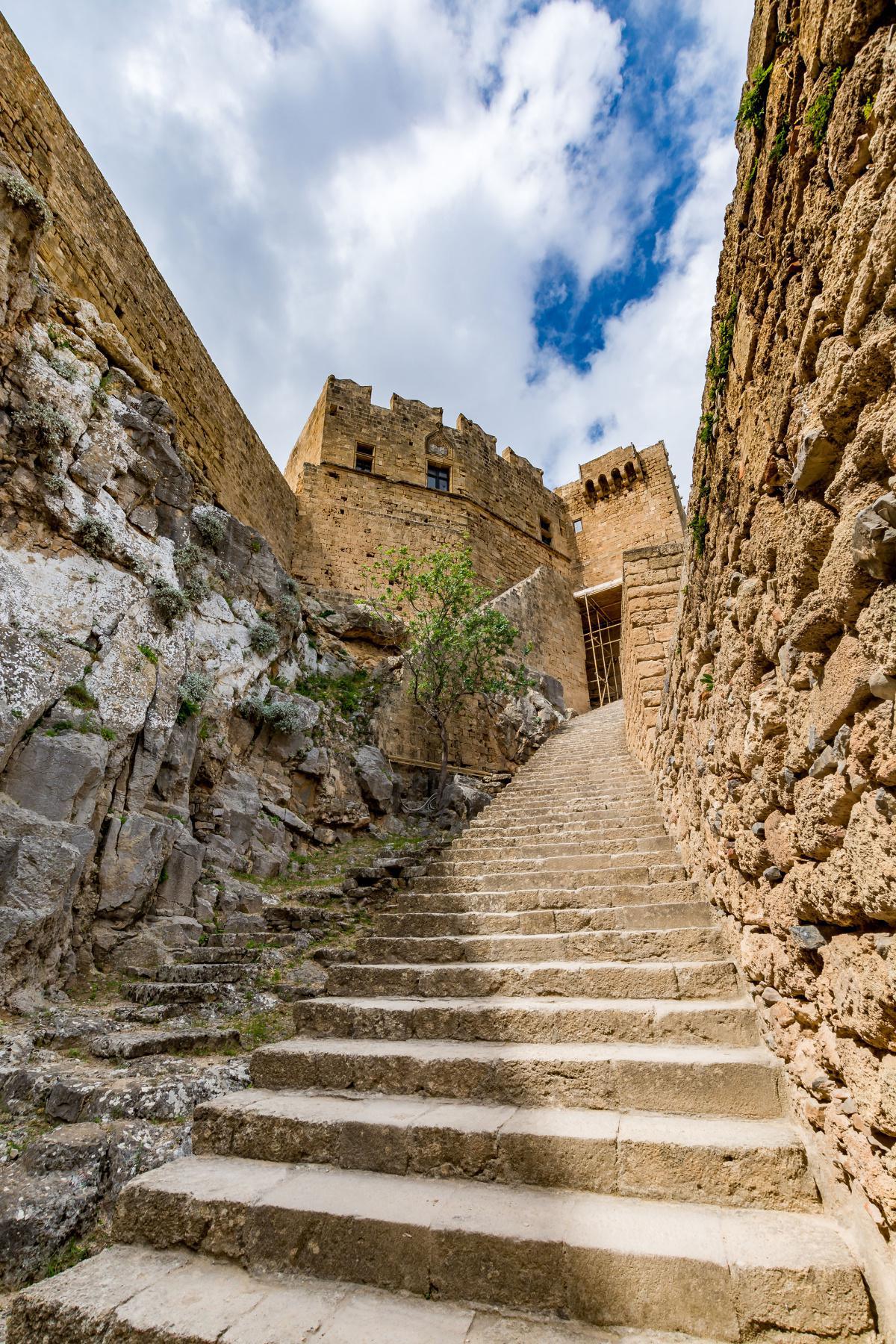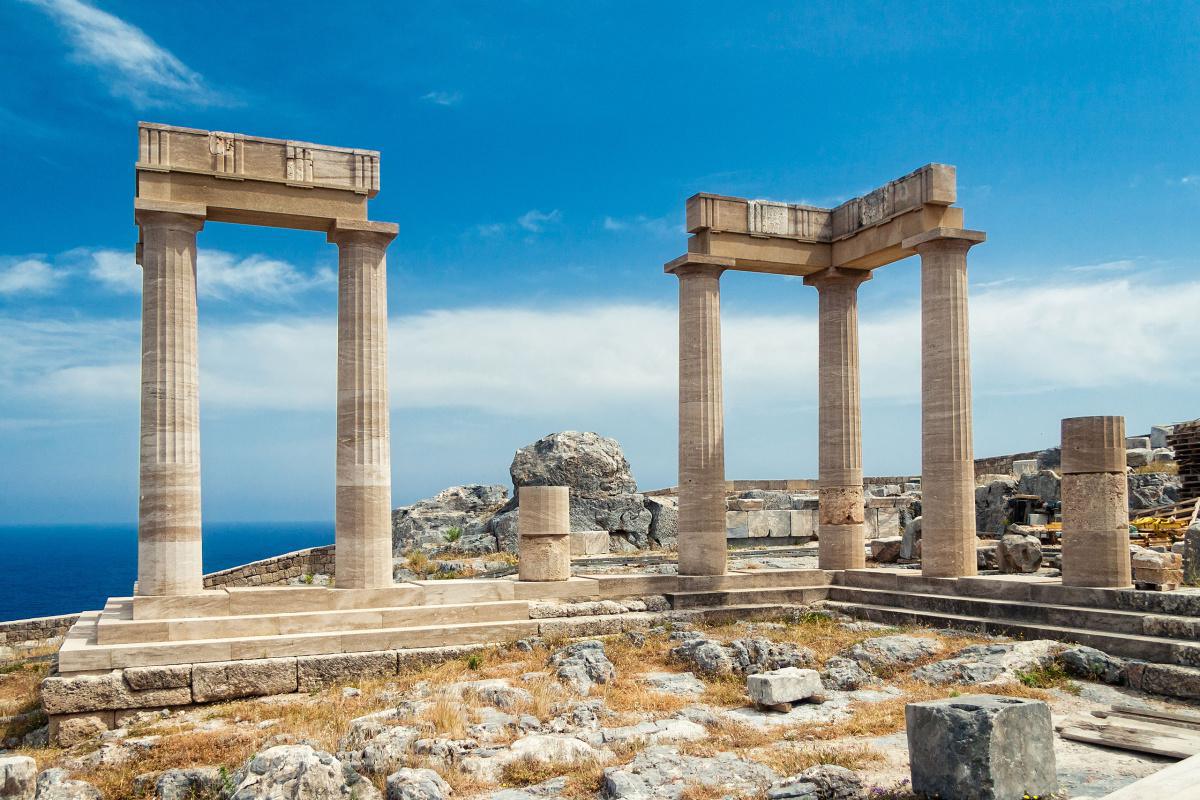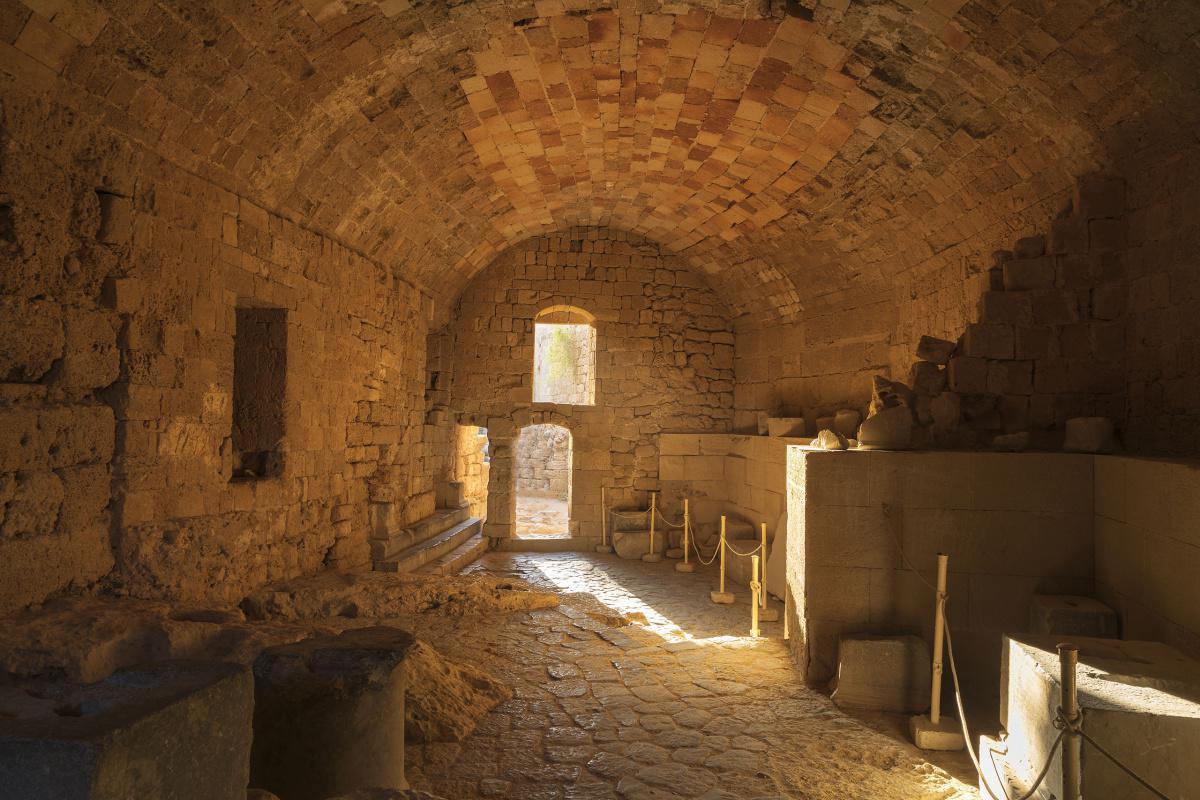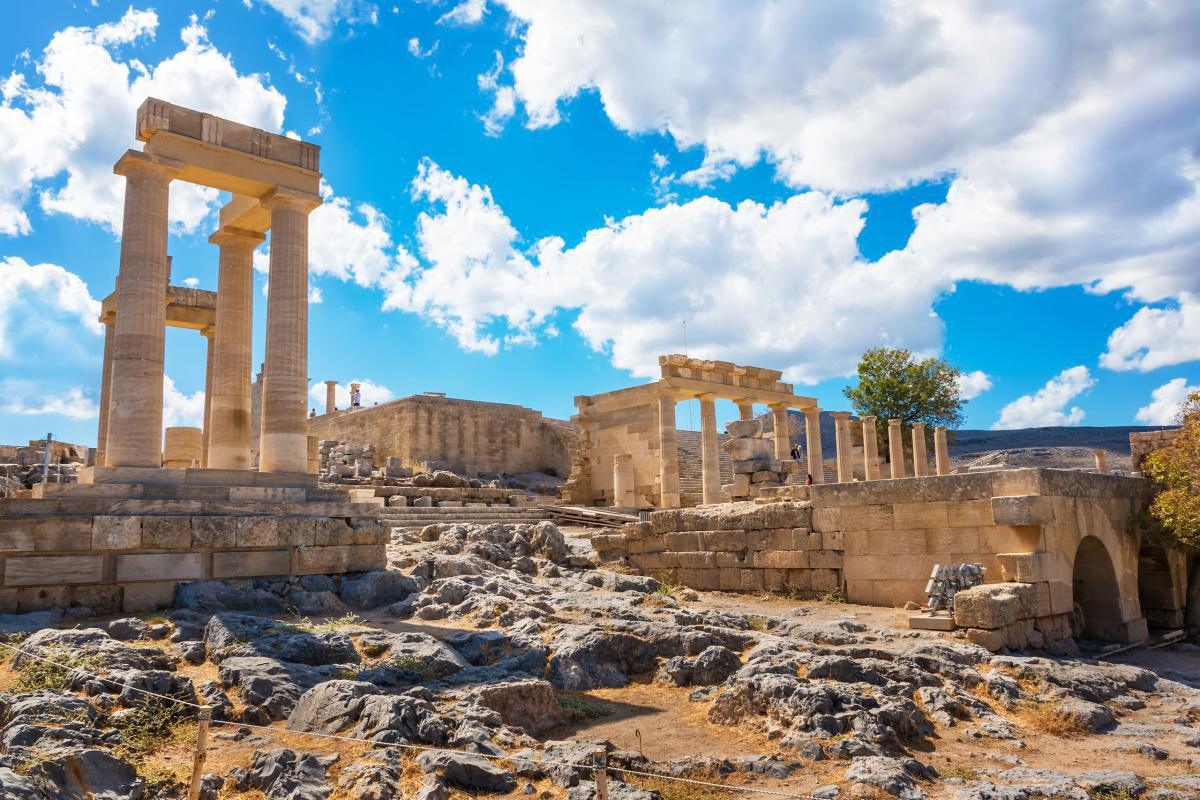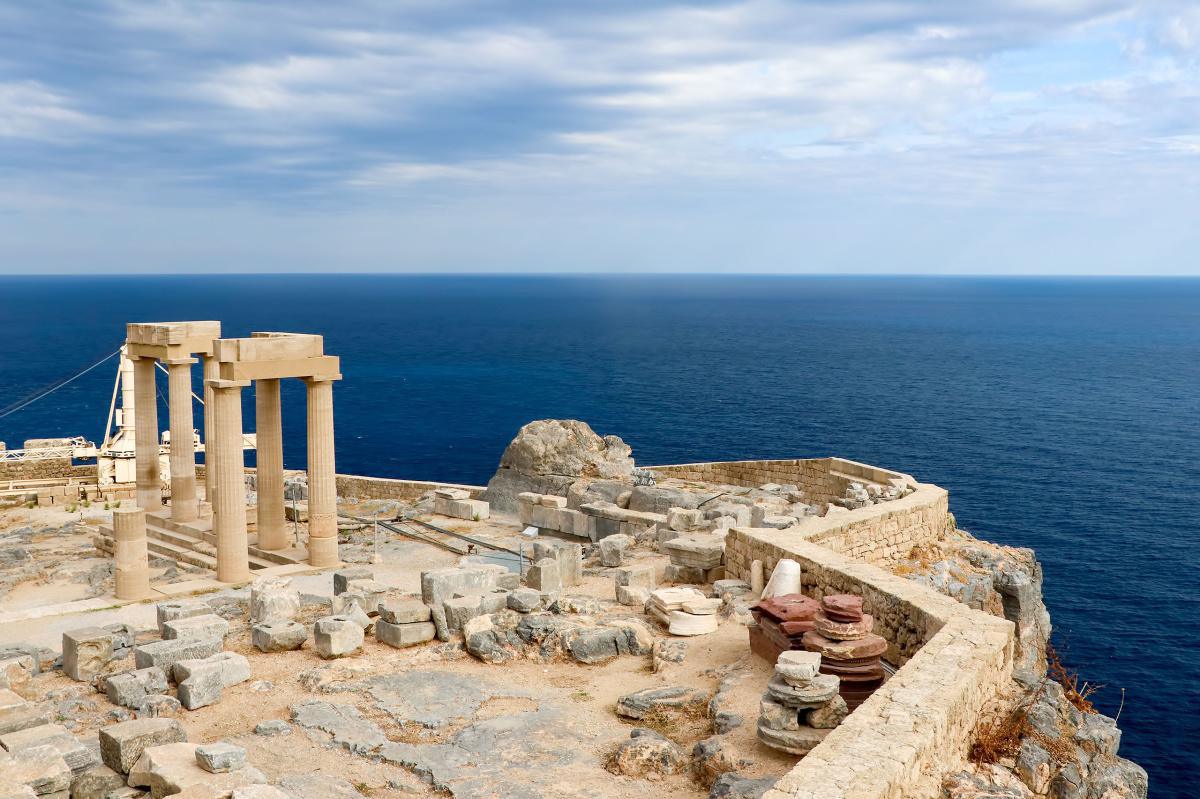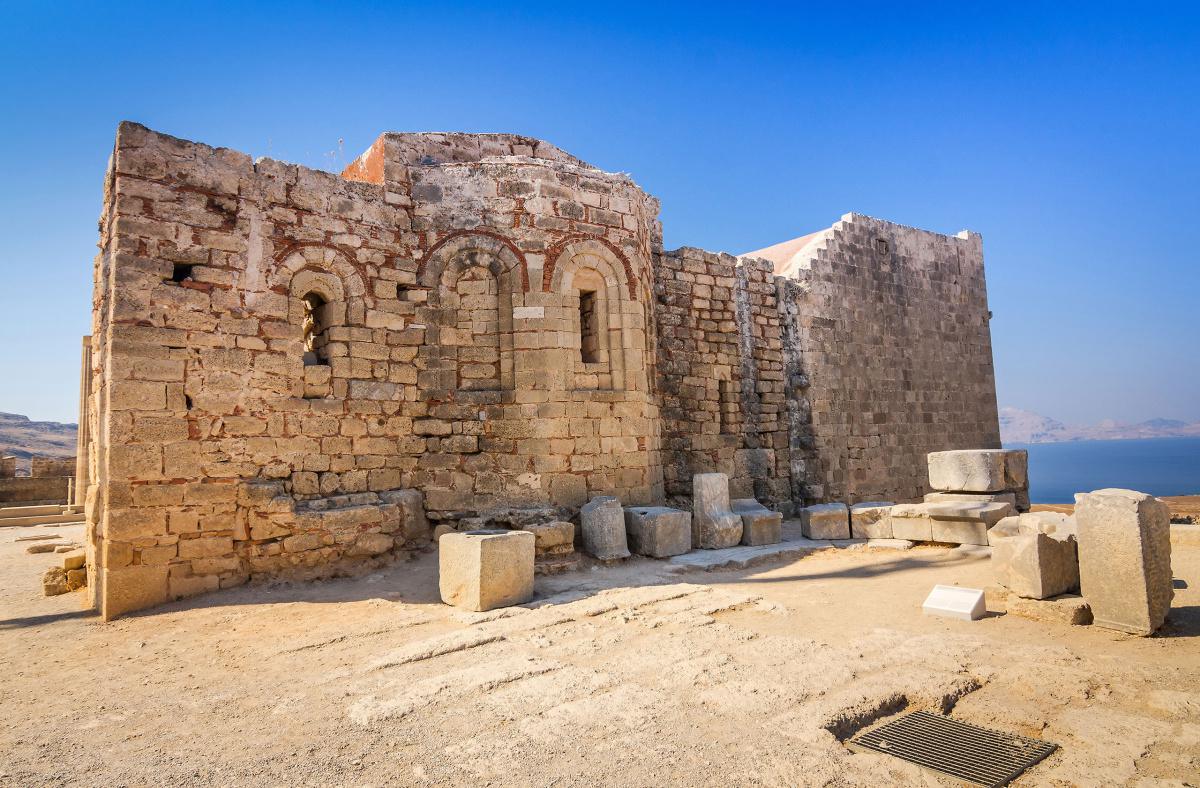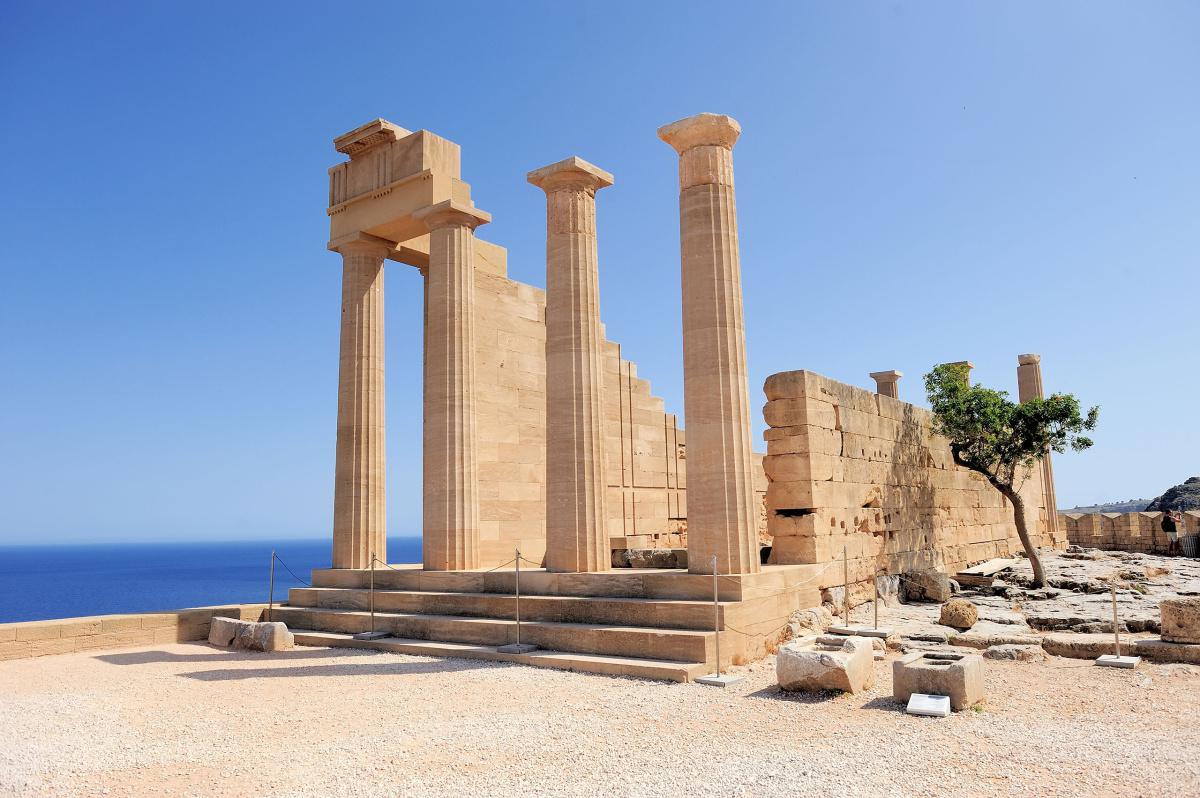The ancient city-state of Lindos, home to the savant ruler Cleovulus, it was admired for its wealth, beauty and strategic position. Lindos has been home to great artists, such as Chares, designer and sculptor of the Colossus of Rhodes, Lysippus, Pythokritos son of Timocharios, who along with Athinodoros and Agisandros created the Nike of Samothrace and the Laocoon Group, as well as to the historiographer Evagoras of Lindos, Timachidas, author of the famous Chronicle of Lindos and the poet Cleobuline.
Upon reaching Lindos, one may admire the panorama of the village from afar, but the view is equally captivating from the sea, reserved for those visiting Lindos on a day cruise setting out from Mandraki harbour of Rhodes.
The traditional village, with its whitewashed houses, the mansions of the ship masters, its Byzantine churches and cobblestone streets, lie at the foot of the Acropolis. Following the path through the village or hiring a donkey from the square, one may ascend all the way up the ancient Acropolis.
The Acropolis of Lindos rises imposingly on a 116-meter cliff, surrounded by powerful walls, like a podium overlooking the sea. At its top stand the ruins of the temple of Athena Lindia of the 4th century B.C., the Propylaea, the great Hellenistic Stoa and the Byzantine church of St. John. At the foothill of the Acropolis, a unique relief trireme of the 2nd century BC, is engraved on the rock. The archaeological site includes:
A Theatre, which lies on the southwest side of the hill, below the Temple of Athena. The circular orchestra and the auditorium for the spectators were hollowed out of the side of the hill. The proedries, honorary seats around the orchestra for the officials, still survive. The auditorium has 19 rows of seats below the diazoma and 7 above it. The first three rows were also intended for officials, and low walls at their sides separated them from the auditorium staircases. Only five of the nine cunei have survived. The theatre could had a capacity of 1,800 spectators.
Four-portico building. There are remains of a four sided building in the extension of the skene of the Theatre. The building had a capasity of 1500-1700 spectators and was intended for religious ceremonies. At a later period the place was occupied successively by three Christian churches.
Boukopion. At Vigli, northeast of the Acropolis, was the Boukopion, a place of sacrifices as the name implies. 38 inscriptions on the rocks around identify the place. A naiskos built of small field stones with a temple, pronaos and kind of vestibule contained the votive offerings (clay and bronze figurines chiefly of oxen) to a deity at present unidentified (10th-9th c. BC).
The cemeteries of ancient Lindos spread over the surrounding district; the most important two funerary monuments are:
"The Tomb of Kleoboulos": This has no connection with the tyrant of Lindos, but was the tomb of a wealthy family. It is a circular structure with carefully built masonry and a vaulted roof. On the inside a bed hewn out of the rock was a kind of sarcophagus and had a cover, which has not survived (2nd-1st c. BC). Traces of wall painting and the name "Ayios Aimilianos" testify to its conversion into a Christian church in a later period.
The Archokrateion. In the locality of Kampana at Krana, on the hill west of the Acropolis, there is a rock-cut tomb. On the first floor facade funerary altars were erected with the names of the dead inscribed on their bases. On the inside a passage led to a place for burial rituals. A total of 19 graves are cut into the walls of this chamber. Its modern name of "Frangokklesia" suggests that in the time of the Knights it was used as a church.
The Naiskos of the Taxiarch Michael Stratelates below the village square. There is a shallow niche with a post-Byzantine representation of the Archangel Michael Psychopompos. The traces of earlier frescos date it to the Byzantine period.
West of it, near the remains of the Moslem cemetery is a shallow niche containing the representation of a mounted saint, possibly 15th c. These remains are known as Ayios Georgios Kammenos.
The Church of the Panayia. In 1489 Grand Master Pierre d'Aubusson funded towards the church's repair and the construction of a groin-vaulted vestibule. The grand master's escutcheon and that of the commander of the castle, Pierre d'Aymer, can be seen on the south side of the smaller bell tower. The frescos in the church are still preserved. The oldest inscription dates back 1637. However, the painting in the church as a whole is listed as the work of the painter Gregorios from Symi, in 1779.
Ayios Georgios Chostos. an inscribed cruciform church with a cupola, is on the northwest edge of the village. In the apse of the sanctuary are five layers of fresco painting belonging to the post-Iconoclast period in the 2nd half of the 12th c., and to post-Byzantine times.
Ayios Georgios Pachymachiotis or Pano This inscribed cruciform church with a cupola dates to 1394/95 according to an inscription on the south side of the front of the apse. It is decorated with full figure saints in luxurious attire on the south wall of the church, hierarchs below the arch of the sanctuary and part of a representation of the Ascension in the vault.
Ayios Menas is the same type as Ayios Georgios Chostos It has interesting late 12th c. frescos which are late Komnene in style but 15th c. in date.
Ayios Demetrios is a small barrel vaulted church northeast of the entrance to the Acropolis. A 15th c. St Demetrios on horseback can be seen in a blind apse on its north wall.
In the locality of Vigli under the east cliff of the Acropolis the mosaic floor and marble tiling of an Early Christian basilica have been found, dating to the 5th c.

